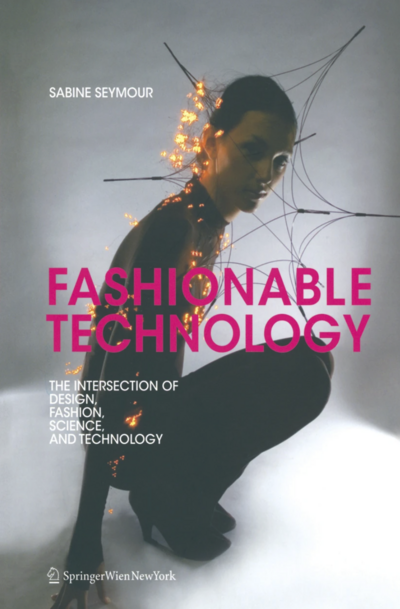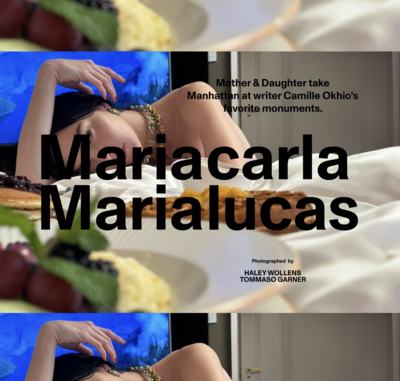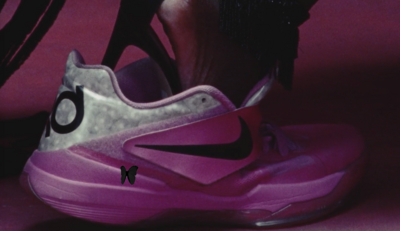[001]
Fashionable Technology
Individual
autonomous
This book provides an accessible yet thorough overview of electronic textiles and wearable technology, exploring the intersection of fashion, design, and science. Exploring both theory and practice, it demonstrates how technology is integrated into fabrics and garments with detailed explanations and rich visual examples. With contributions ranging from the MIT Media Lab to designer Hussein Chalayan, Seymour showcases a variety of pioneering designers, artists, companies, and research institutes, and highlights their groundbreaking projects alongside surveys of their wider work.
12.12.25
[012]
Mission Accomplished: Belanciege
Collaboration
politics

Trafó Gallery, photo by Dávid Biró
Hito Steyerl "Mission Accomplished: BELANCIEGE" is part of the exhibition "… of bread, wine, cars, security and peace". The point of departure for the three-channel video installation is the fall of the Berlin Wall in 1989 and how this historical event paved the way for commodification and privatization. The artists turn to the field of fashion, using the luxury brand Balenciaga as an example to reflect on political and cultural changes in the period of the last thirty years. The video installation MISSION ACCOMPLISHED: BELANCIEGE presented at Trafó Gallery reveals similar ’invasions’ of history and emphasizes their cyclical nature by turning towards the processes of economic and political realignment that followed the fall of the Berlin Wall, and by featuring examples that target our hyper-contemporary world armed with trend analysis, data mining, political advertising and audience targeting.
The video installation is co-created by Giorgi Gago Gagoshidze, Hito Steyerl and Miloš Trakilović and is based on their lecture in 2019 at n.b.k. - Neuer Berliner Kunstverein. Almost 30 years to the day after the fall of the Berlin Wall, the lecture reflects on post-1989 transformations and political rearrangements in the former Soviet territories, sheds light on the interconnections between culture and populism, and examines in a broader context the mechanisms of oligarchic-capitalist culture that emerged during the 'privatisation' of the former Eastern bloc.
12.12.25
[017]
Digital Research Methods in Fashion and Textile Studies
Individual
pedagogy
Digital Research Methods in Fashion and Textile Studies presents the reader with a variety of digital methodologies to help build skills in searching for, analyzing, and discussing vintage design, photography, and writing on fashion, as well as historic and ethnographic dress and textile objects themselves. Each chapter focuses upon a different method, problem, or research site, including:
- Maximalism and mixed-methods approaches to research
- Searching large databases effectively
- Pattern recognition and visual searching.
- Critical reading, use, and citation of social media texts
- Digital ethnography and shopping as research
- Data visualization and mapping
- Images in the public domain
From advanced undergraduates and postgraduate students working on research projects to veteran professionals in fashion and textile history and beyond, everyone can benefit from a diverse set of fresh approaches to conducting and disseminating research. In the current age of instant gratification, with users snapping and posting images from runway shows long before the clothes will ever appear instores, the world of fashion is increasingly digital and fast-paced. Research on fashion is, too. Digital Research Methods in Fashion and Textile Studies will help you keep up in this rapidly changing world.
12.12.25
[026]
“Trust Us, We’re You”: Aspirational Realness in the Digital Communication of Contemporary Fashion and Beauty Brands
Individual
critical
In recent years, a number of fashion and beauty brands have developed promotional content that circulates an aspirational quality imbued with unstudied “cool” around their product. Despite the appeal of this conceit to tropes of the everyday, authenticity, and belonging, it presents a superficially relatable ideal whilst exploiting digital media’s capacities to foster intimacy and promote a postfeminist subjectivity based on consumption.
This article examines three brands that circulate “aspirational realness” around their product: Glossier, Reformation, and Maryam Nassir Zadeh. All remediate the conventions of prior fashion media to communicate discourses of neoliberal femininity to a media-savvy consumer. Aspirational realness is thus read as a means by which consumption is both encouraged and situated as a means of self-realization in the likeness of other aspirational “cool girls.”
12.12.25
[027]
Fashion Paratext Dataset
Collaboration
critical
The FASHION PARATEXT DATASET focuses on the collection and analysis of fashion captions within contemporary fashion media. Although often overseen and rendered subordinate, these paratextual snippets of text-such as titles, introductions and captions-work as strategic value producers within fashion media and shape our fashion narratives and vocabulary. Accordingly, these textual elements play an important role in our relation to fashion and clothes as readers, wearers, makers and consumers. Through its dominance and vast networks, industrial market-based fashion language is becoming our fashion mother tongue. And as professor of applied linguistics Robert B. Kaplan writes, our first language, or mother tongue has a powerful influence on the way we shape our thoughts and organise our ideas.
Using data science methods, this project collaboratively produces a large-scale dataset of fashion captions that can be mapped and analysed using Natural Language Processing. The dataset takes the captions out of the saturated pages of fashion media (both print and online), offering the opportunity to read them attentively, isolated from their original context. As such, it can open up space to think about an alternative vocabulary.
“This website explores the unique poetic character of fashion captions, and text in general of its media systems.”
12.12.25
[030]
Our Digital Selves
Collaboration
speculative

‘Ecstatic Wholeness’ by The Fabricant
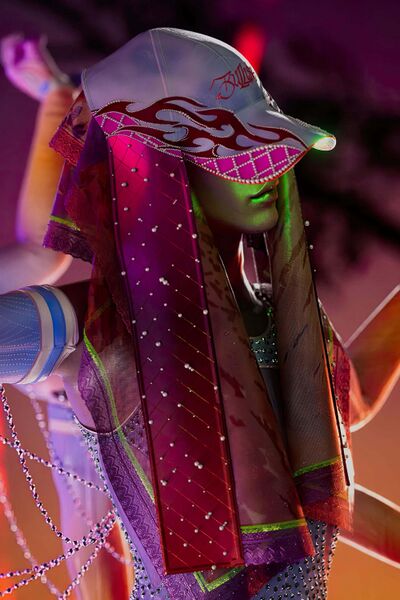
‘Ecstatic Wholeness’ by The Fabricant
"With the emergence of the Metaverse, we can reinvent ourselves in ways in which we’ve always dreamt. Modem teamed up with The Fabricant, SHOWstudio and Anastasiia Fedorova to imagine how our virtual alter-egos could change the ways we think about ourselves. Expanding on the work of The Fabricant, which explores the malleable future of human identity through non-physical garments, Our Digital Selves studies the ambiguous relationship between the real and the virtual self"
“When musing on fashion and identity, it’s always worth asking: when does wearing something truly change the meaning of who we are?”
12.12.25
[035]
Fashion Knowledge Podcast
Individual
pedagogy
Fashion Knowledge is a podcast about inclusive, sustainable, and digital fashion futures. Beata Wilczek, founder and director at Unfolding Strategies, a fashion consultancy and edu lab for fashion in Web3, hosts new and brave voices in fashion innovation, design, research, and education, to learn more about digital fashion and sustainability.
12.12.25
[037]
Notes on Phygitality
Collaboration
speculative
Published in Issue#6 of NXS Magazine ‘Phygital Fashioning’, ‘Notes on Phygitality’ documents an asynchronous dialogue held in the spring of 2022.
The conversation delves into the concept of "phygitality," blending physical and digital realms. They explore its implications, noting, "It’s about how you can interface between the physical and the digital." Discussions encompass the fusion's impact on human interaction voicing that we have more freedom to express ourselves. Ethical dimensions are scrutinized: "We need to be careful about what that [digital footprint] means." The dialogue reflects on art, privacy concerns, and the intricate interplay shaping future socio-technological landscapes.
12.12.25
[042]
From a Tool to a Culture : Authorship and Professionalism of Fashion 4.0 Designers in Contemporary Digital Environments
Individual
This thesis looks at how fashion design is affected by new technology. It contributes to fashion studies and design research. It uses ideas from authorship theory, sociology of professions and posthumanism. The research looks at four fashion design practices where creation takes place in virtual spaces and is shared with non-professionals, networks or machines. The case studies are The Fabricant, Atacac, Self-Assembly and Minuju.
12.12.25
[044]
Transactional Aesthetics
Individual
pedagogy
da Falck Øien explores the emotional relationships humans have with their garments and how acquisition methods influence these relationships. The research, conducted from 2017 to 2021, involves ethnographic studies, collaboration with a fashion label, public engagement through a physical space, and the creation of publications and products. Øien aims to address the environmental impact of the fashion industry by rethinking resource use and consumer behavior, emphasizing fashion as a cultural and social phenomenon beyond mere clothing items.
12.12.25
[050]
Fred Perry x Raf Simons interactive lookbook
Company
commercial
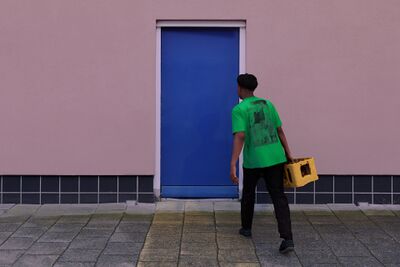
Fred Perry x Raf Simons AW19 by Random Studios
The Fred Perry x Raf Simons SS19 collaboration is presented within an immersive editorial lookbook, honouring an everyday interface familiar to many. Worn by anonymised individuals, the garments can be viewed in a navigable environment, where modified stills create the setting of a universal suburb. Each garment can be examined up-close, with options to view it in situ or in the shop. Location URLs of found garments, sound snippets or visual frames can be shared on social media. The entire campaign can also be viewed as a series of semi-accidental screenshots.
This is the first instalment in a three-part exploration of 360 storytelling. Part two centres around 80s Youth Archive photographs, while part three, 'A Lookbook of Many Gazes', allows the viewer to see the SS20 collection through the eyes of many.
While lookbook offers an examination of the intersection of fashion and digital culture as it immerses the viewer in a hyper-stylised digital environment, utilising motion sensors and abstract imagery to transform familiar, lived experiences into something eerily distant when played out on screen. This dissonance challenges our perceptions of reality, suggesting that the digital mediation of fashion can distance us from the authenticity of human experience, making the familiar strangely unsettling.
12.12.25
[060]
Fashion is not a Sign: Reading P.R.A.D.A. Theory-Fashion and Luxury Language
Individual
critical
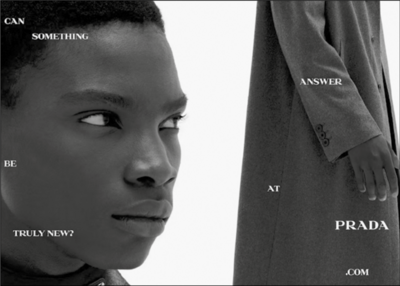
Prada Spring/Summer 2021 campaign by Ferdinando Verderi. Courtesy of the photographer and Prada
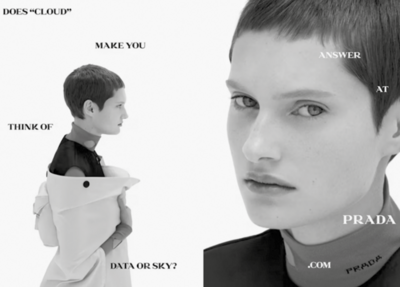
Prada Spring/Summer 2021 campaign by Ferdinando Verderi. Courtesy of the photographer and Prada
“It is obvious enough why a clothing company might align itself with art or theory: to spritz its all-too-worldly wares with the air of intellect.”
12.12.25
[067]
The Side Hustle in Your Closet
Individual
critical
Scarabelli explores the rise of 'virtual shopping' on resale platforms such as eBay, Poshmark and Grailed, which allow users to engage in 'digital window shopping'. The ability to save items to wish lists and shopping carts allows us to create a curated collection of items we may never buy, transforming consumption into an imaginative, almost aspirational experience. The essay highlights the ways in which resale platforms mimic social media, encouraging not only purchases but also the creation of online identities through saved designer goods and mood boards - ultimately embedding subliminal modes of consumption into digital habits, while blurring the lines between physical and virtual consumption.
“In the world of recommerce, virtual shopping is the new consumerism that everyone can afford. [..] Virtual shopping exists within a liminoid space, what cultural theorist Rob Shields defines as a meeting point of the imaginary and the material.”
12.12.25
[069]
BUFFER: on fashion, world building and our bodies
Academia
pedagogy
A playlist of talks given during the BUFFER summit organised by MA Fashion Media & Communication at the London College of Fashion (UAL).
In his opening remarks, Dr. Daniel Felstead highlights the growing influence of fashion and gaming in today's cultural landscape, particularly in the context of societal shifts and the decline of traditional art forms. Both industries excel in world-building, blending economic, social, and aesthetic elements into immersive narratives. The convergence of gaming's interactive environments and fashion's diverse media outputs reflects and momentarily escapes today's chaotic realities. Fashion is increasingly being viewed as a form of "world-building technology," as evidenced by collaborations such as Balenciaga's forays into gaming. This cultural shift and growing relationship between these sectors raises questions about how such immersive worlds influence our identities, bodies and societal roles in this period of transformation.
“If World building has become a central mode of cultural production today, then what kind of subjectivities and bodies will it demand?”
12.12.25
[070]
Myth Magazine
Collaboration
commercial
Myth Magazine is a shapeshifting online publication, that will not be found on the news stands.
MythMagazine is a digital-first editorial journal, created with digital affordances at its core, rather than as a print adaptation. The magazine takes a screen-first approach to its fashion editorials, incorporating a variety of visual elements such as still, moving, looping, glitching and collaged imagery, as well as sound. This approach differs from the post-human aesthetics commonly seen in digital-first fashion practices.. ,
“Being online means the possibilities are endless. It makes the edit different too, because a page count is irrelevant, but there’s still a permanence and a relevance”
12.12.25
[073]
Why We Can’t Have Nice Things : Social Media’s Influence on Fashion, Ethics, and Property
Academia
critical
Minh-ha T. Pham critically examines the intersection of digital culture and the fashion industry, exploring how social media reshapes ideas of creativity, ownership, and ethical labor. Through incisive analysis, Pham unveils how influencers and platforms commodify aesthetics while obscuring labor inequalities and perpetuating exploitative practices. The book critiques fast fashion and intellectual property disputes, highlighting the ethical dilemmas amplified by digital visibility. With its interdisciplinary approach, the text invites readers to reconsider their complicity in sustaining inequitable systems. A timely contribution, it challenges dominant narratives about fashion's democratization.
12.12.25
[077]
'Creating Afterlives' Fashion Research Symposium 2025
21.03.25
12.12.25
